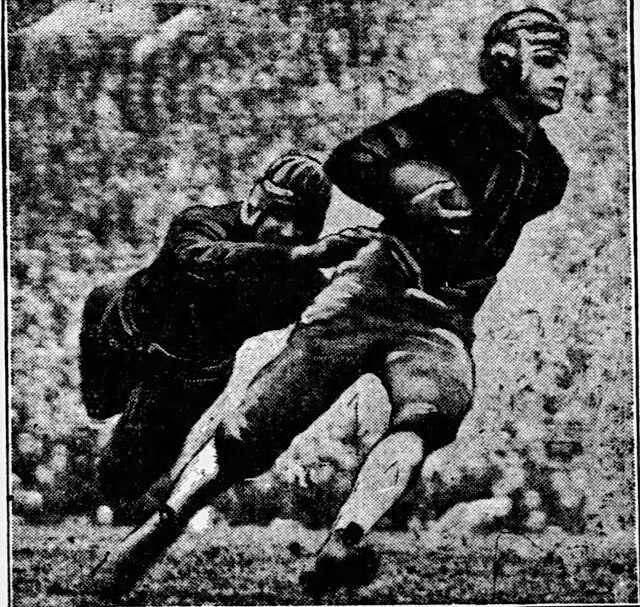Before the Rose Bowl became an annual tradition, there was the 1927 battle that truly launched the Notre Dame-USC rivalry into the national spotlight. On November 26, 1927, the Trojans traveled farther east than ever before for a football game, arriving at Soldier Field in Chicago. What followed was a defensive masterpiece played before a staggering crowd of 117,000 spectators, all of whom witnessed a 7-6 nail-biter that hinged on one of the most disputed officiating calls in the rivalry’s history.
The Game
The atmosphere in Soldier Field was electric, fitting for an intersectional clash of this magnitude. The excitement peaked early, with both teams finding the end zone in a frantic first quarter. Following the initial exchange of scores—the Irish leading 7-6—both defenses settled into a brutal, low-scoring war of attrition. Yardage became a premium, and every down was a fight. The lead remained precarious, threatening to swing on any mistake or penalty.
The most critical moment arrived late in the third quarter. A deep USC drive seemed poised to take the lead. On a pivotal play near the Irish goal line, Notre Dame back Charles Riley intercepted a pass, but fumbled the ball as he went out of the end zone. USC immediately claimed they deserved a safety or a potential score, which would have put them ahead 8-7 or 9-7. However, the officials ruled that Riley never established clear possession before the ball went out. The controversial “no possession” call negated the potential score and preserved the slim 7-6 lead for the Fighting Irish. Post-game films, viewed later, reportedly suggested the officials might have been wrong, ensuring the decision would be debated for decades and forever clouding the outcome.
The final quarter was an agonizing defensive stand for both sides. Despite the massive psychological shift that the potential go-ahead score would have created, the determined Trojans could not break through. The Fighting Irish defense held strong against the formidable USC attack, ultimately securing the monumental 7-6 victory. This single, controversial win was monumental, not only for the size of the crowd it drew but for demonstrating the intense, often bitter, rivalry that was forming between the two powerhouse programs.
Conclusion
The 1927 showdown proved the national appeal of the Notre Dame-USC rivalry, drawing a record crowd to witness a classic battle of grit and determination. Yet, the final score will forever be shrouded in the controversy of Charles Riley’s near-fumble, leaving the Trojans to wonder what might have been. This game stands as a foundational chapter, establishing the rivalry’s penchant for high stakes, monumental crowds, and indelible moments of gridiron fate.

